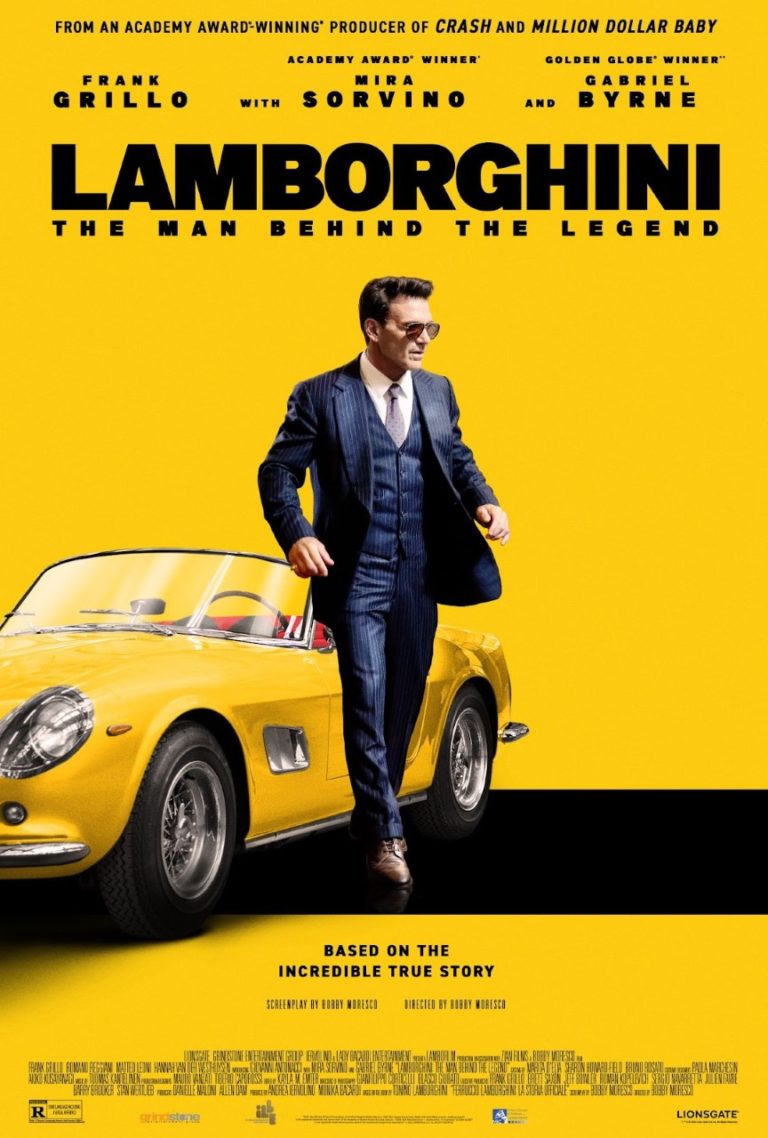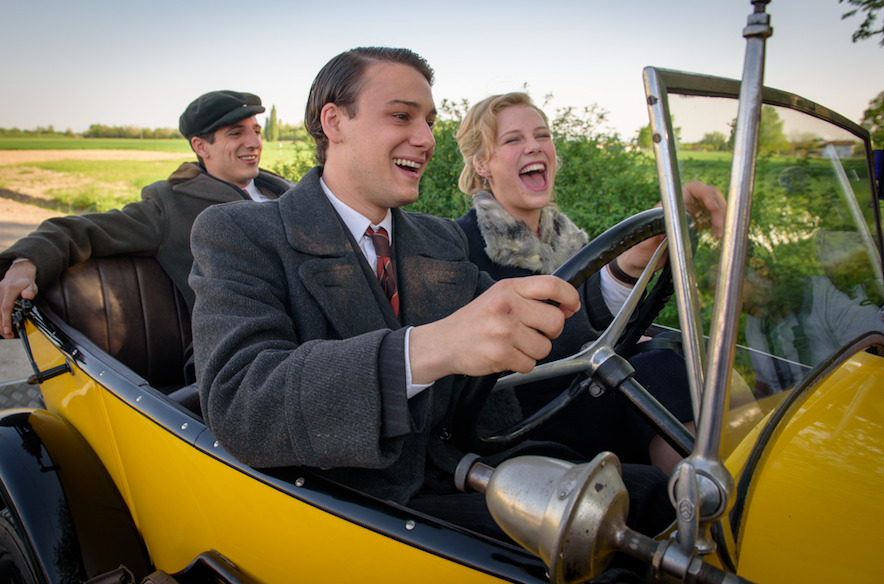
The Lamborghini name resonates in the hearts of automobile enthusiasts worldwide. Filmmaker Bobby Moresco — who won the Academy Award for Best Original Screenplay for Crash in 2006, which he shared with co-writer Paul Haggis — traces the origins of the brand, by bringing to the silver screen a biopic about the founder of the company.
Lamborghini: The Man Behind The Legend, succeeds in conveying the intention of the filmmaker who said: “The rise of Ferruccio Lamborghini from a farmer’s son to a world-renowned industrialist – and possibly the greatest car maker of his or any time – coincided with the change in postwar Italy itself from an agricultural nation to an industrial one. It was a fascinating and exciting time for people like Lamborghini and for all of Italy. And great grist for the makings of a movie.”
The film, written and directed by Bobby Moresco, is based on the book by Tonino Lamborghini ‘Ferruccio Lamborghini: La Storia Ufficiale.’ The perspective is palpably the one of a loving yet critical son, who cherishes the professional achievements of his father but reprimands his shortcomings in the private sphere.

Ferruccio Lamborghini (Romano Reggiani and Frank Grillo) was originally from a small town called Cento, nestled in the province of Ferrara in the Emilia-Romagna region of Northern Italy. When World War II ended he was drawn to farming machinery, after having served as a mechanic and supervising the vehicle maintenance unit. The film shows us how in Post-War Italy, Lamborghini with his friend Matteo (Matteo Leoni) modified an old Fiat Topolino he had purchased and started building the first of his ‘Carioca’ tractors. In those years he married Clelia Monti (Hannah van der Westhuysen), who died giving birth to their son Tonino Lamborghini (Lorenzo Viganò). Briefly after, Ferruccio remarried to Annita Borgatti (Chiara Primavesi and Mira Sorvino), who followed him in running his companies for over thirty years.
Lamborghini: The Man Behind The Legend explores the lifetime of this extraordinary entrepreneur, driven (pun intended) by the dream of beating his longtime rival Enzo Ferrari (Gabriel Byrne). The motion picture leads us to his golden years, the Sixties, when the Lamborghini Trattori Factory was established, that eventually became the establishment of the first Lamborghini Autmobile Factory in Sant’Agata Bolognese.
The most representative moment of his career that is recreated on screen, is the making of the “special car” Miura, which was built in six months for the 1966 Geneva Motor Show. It was developed by automotive engineer from New Zealand Bob Wallace as well as three top Italian engineers: Giotto Bizzarrini, formerly of Ferrari; Gian Paolo Dallara, formerly of Maserati; Franco Scaglione, formerly of Alfa Romeo.When the Museum of Modern Art in New York exhibited the Lamborghini Miura, they declared it to be “The Most Beautiful Car Ever Made.” The film also reveals the origin of the name, that was inspired by Ferruccio’s fascination for bullfighting. He was so impressed by the majestic animals he saw while visiting the Seville ranch of Don Eduardo Miura, that he decided to adopt a raging bull as the emblem for the auto company.
But besides being a phenomenal captain of industry in the automotive field, Ferruccio Lamborghini was a philanderer who did not dedicate much time to his family. This comes through unapologetically, and it is easy to detect the active part played by Tonino Lamborghini in the making of the film.

The storytelling is effective, retracing the original dwellings of the protagonist’s existence and bringing forth an authentic history of the legend and the man. However the mise-en-scène sometimes falters, as some directorial choices trip in the Hollywood temptation of cultural appropriation. Italy is depicted as a dainty postcard and its inhabitants speak with an accent, just like in the mobbish House of Gucci. Lamborghini: The Man Behind The Legend takes place in the character’s homeland so it feels superfluous to give them this inflection, they are not immigrants who are attempting to communicate in a language that is different from theirs. However, the acting by the entire cast is so impeccable that audiences are able to look past this foible. Furthermore the music selection is exquisite, as it features songs that convey the mood of all the decades that are covered in the film, such as Conosci Mia Cugina by Ernesto Bonino; Do You Amare Me by Daniele Benati, Alan Iotti, Giulio Vetrone & Fabio Di Bari; Nessuno performed by Mina; Quando Tu Verrai and I Sorrisi Di Sera performed by Tony Renis.
Lamborghini: The Man Behind The Legend at the end of the day comes across as a story of the American — Italian, in this case — Dream where persistence and perseverance pay off. Also a few motivational quotes are sprinkled to reinforce the message, like “we only lose when we give up,” and “If we fail, we fail searching for greatness, we chase the dream.”
Ferruccio Lamborghini’s legacy still thrives today even though some of his descendants are pursuing different career paths. For instance, his granddaughters Elettra Lamborghini and Ginevra Lamborghini, are dedicating themselves to pop music and reality shows. But the Museo Ferruccio Lamborghini — founded by his son Tonino in Argelato, a few kilometres from the centre of Bologna — still holds the industrial productions of the company that Ferruccio started in 1947, as well as the the sports cars of the 1950s, 1960s, and 1970s.
As a result of Ferruccio Lamborghini’s dedication to his profession he was given the Italian decoration ‘Cavaliere del Lavoro,’ literally ‘Knight of Labour’, that is bestowed to important figures in industry “who have been singularly meritorious.” He was a true visionary and Lamborghini: The Man Behind The Legend effectively captures his ability to think outside the box.
Final Grade: B-

